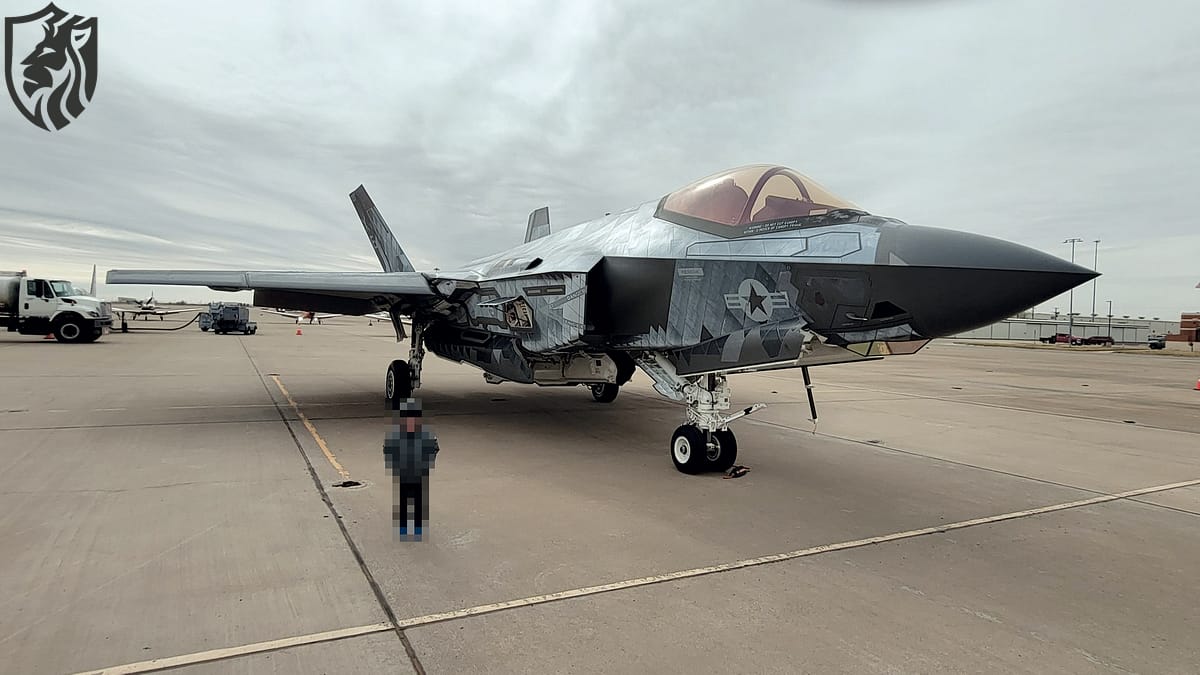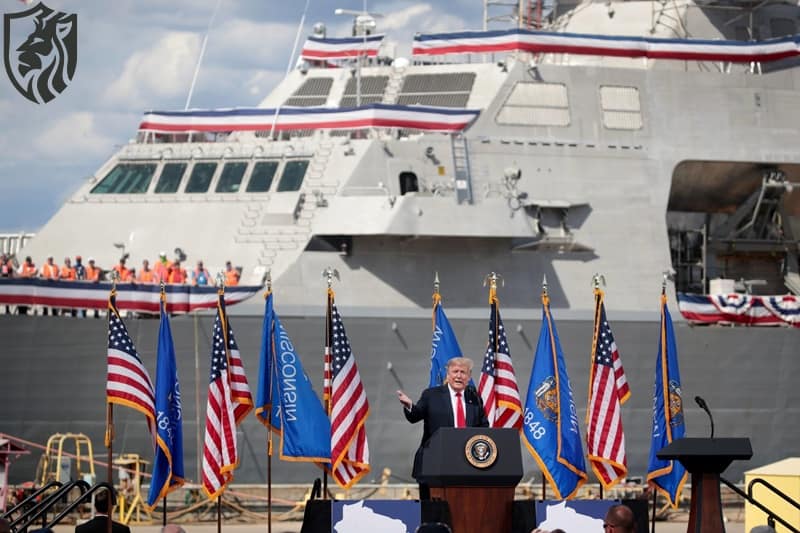
The F-35C BuNo 168842 with the special coating parked at Midland airport, Texas, in November 2022. (Image credit: @TimHPatriot)
Newly emerged photos reveal the F-35C’s mirror-like coating along with damaged tiles after intensive testing. Recent photos have surfaced online, shedding light on the U.S. Navy’s experimental mirror-like coating on the F-35C.
The images, dating back to November 2022, depict the second “chrome” F-35C, BuNo 168842, parked at Midland Airport, Texas, with its reflective coating significantly degraded. This development raises questions about the intended purpose and durability of this unique technology.

Mysterious Coating Degradation
The newly surfaced photos, shared by aviation enthusiast @TimHPatriot, show extensive wear and tear on the mirror-like tiles. According to the photographer, the pilot suggested the coating was designed to protect the aircraft’s skin from salty air but noted that the tiles kept peeling off during flight.
This conclusion challenges earlier theories that suggested the reflective coating served to lessen the aircraft’s infrared (IR) signature.
Given the visible deterioration, it is likely that the tiles were not painted but rather applied using an adhesive, similar to vinyl films used for temporary aircraft liveries. This could explain their tendency to peel away during high-speed manoeuvres.
Testing in Varied Environments
The F-35C BuNo 168842 was one of multiple aircraft undergoing experimental trials with this special coating. While one was tested aboard the USS Abraham Lincoln (CVN 72), others were frequently spotted at desert airbases like Nellis AFB, Nevada, and Edwards AFB, California. The contrasting conditions suggest a wide range of environmental stress tests.
Connections to F-22 and F-117 Stealth Coatings
The reflective treatment on a U.S. military aircraft is not new. The F-22 Raptor was the first to feature this coating, particularly on non-combat-coded aircraft used for training and testing. The coating was reportedly an experimental solution aimed at enhancing the sustainability and reliability of radar-absorbent materials (RAM), which often degrade quickly.
Since November 2021, observers have also spotted F-117 stealth fighters sporting similar coatings. The layout on the F-35C closely resembles that of the F-22, with small, reflective tiles strategically placed over the nose, fuselage, weapon bay doors, and the inner and outer faces of the twin tails.

Possible Theories Behind the Coating
Theories surrounding the purpose of the mirror-like finish vary. The most credible explanations include
- Counter-IRST Technology: Designed to reduce the aircraft’s infrared signature against enemy IR search and track systems.
- Radar Absorbent Material (RAM) Replacement: A more durable and easier-to-maintain alternative to conventional RAM coatings.
- Passive Laser Defense System: Potentially reflecting laser-guided weaponry or reducing visibility in high-energy targeting systems.
Return to Standard Livery
By early 2023, the F-35C BuNo 168842 was spotted in its original grey livery, with the reflective tiles removed. Additionally, the aircraft’s Modex changed from XE-105 to XE-101, but it remained assigned to VX-9, stationed at Naval Air Weapons Station China Lake.

Final Thoughts
The emergence of these photos offers helpful information about the U.S. Navy’s ongoing stealth technology experiments. Although the exact purpose of the mirror-like coating is still unknown, its apparent durability shortcomings indicate the need for further refinements.
This technology, whether for IR suppression, RAM enhancement, or another classified objective, signifies a significant advancement in the evolution of stealth warfare. The aviation community will undoubtedly keep a close watch for further developments on this mysterious coating and its potential applications in future combat scenarios.
References
- Aero Vodochody Official Website
- Egypt Air Show 2024 Official Website
- Defense News Today
- FlightGlobal – Aviation News
- Pakistan Defence Forum








